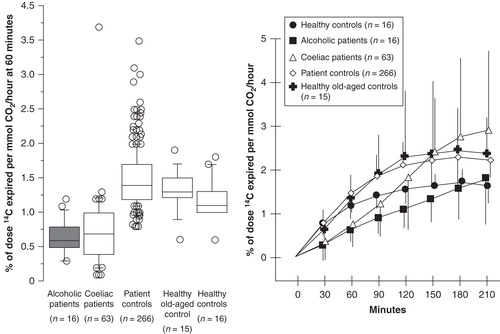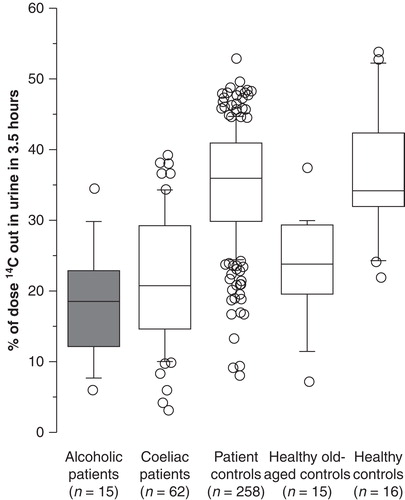Scandinavian Journal of Gastroenterology. 2012; 47: 428–434
When the article was published in the April issue, incorrect versions of and were included. The figures are now corrected. The 14C-D-xylose breath test results at 60 minutes and the 14C-D-xylose breath test time curves are presented in . The 14C-D-xylose passed in urine in 3.5 hours is presented in .
The urine data and the 14C-D-xylose breath test time curves had switched places in the published figures.
The corrected versions of the figures are shown below.
Figure 1. The % of dose 14C recovered per hour at 60 minutes was significantly reduced in the group of alcoholic patients compared with patient-, healthy- and old-aged controls and similar to untreated coeliac patients (left). The time curve of the 14C-D-xylose breath test showed significantly reduced D-xylose absorption during the first 150 minutes in the group of alcoholics compared with healthy controls. Values are mean and vertical lines represent the standard deviation (SD) (right).


